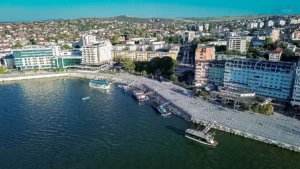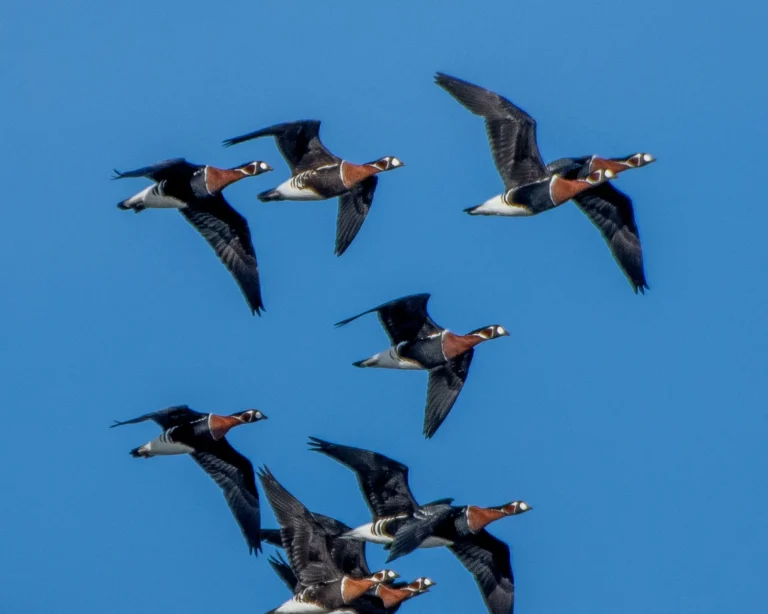
Red-breasted goose

Description and how to observe Red-breasted goose:
The Red-breasted Goose, known scientifically as Branta rufficollis, is a distinctive and colourful species, recognised for its spectacular plumage. It has a bright red neck, black-coloured head and back and white flanks with black stripes. It can usually be spotted in the Danube Delta during the cold season, autumn and winter, when it migrates into the region. It prefers wet areas such as pools and lakes and is often seen in large groups.
What it feeds on Red-breasted goose:
The red-breasted goose's diet is predominantly vegetarian. In winter, it feeds on grasses, aquatic plants and cereals, which it finds in floodplains and farmland near the Danube Delta.
Threats:
The species is threatened by habitat loss, mainly due to wetland drainage for agriculture and construction. Illegal hunting and human disturbance are also risk factors contributing to population declines. Its limited wintering area and dependence on specific habitats make it vulnerable to climate change.
Ecological role:
More information on Branta rufficollis:
Conservation of the red-breasted goose has become a priority for many organisations, given its vulnerable status. Monitoring and conservation programmes have been implemented to try to stabilise and increase the population of this wonderful species. In the Danube Delta, watching these geese can provide a unique experience for birdwatchers and tourists, as well as signalling a healthy environment.
Discover now the most beautiful places in the Danube Delta!
In the following pages, you will find detailed information about:
- Top tourist destinations: Traditional villages, nature reserves, tourist trails and much more.
- Activities and attractions: Everything you need to know about boating, fishing, bird watching, cycling and other activities.
- Accommodation and catering: Accommodation to suit all budgets and restaurants serving traditional cuisine.




